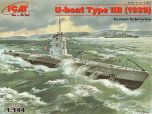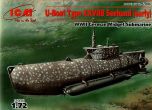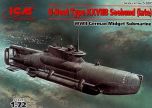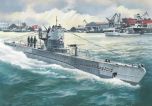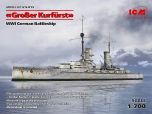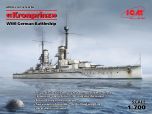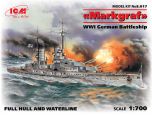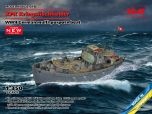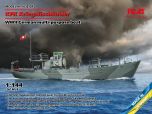ICM 1/72 Molch WWII German Midget Submarine (100% new molds) # S019
The Molch was a single-seat ultra-small submarine designed for operations in the coastal zone and belonged to the so-called special assault forces.
During development, it was designated as "Thomas II", and production of serial models, known as "Molch", began in July 1944.
The mini-submarine was equipped with a single electric motor for surface and underwater operation, which limited its combat capability.
The depth of immersion was up to 60 meters, and the maximum speed in the underwater position was 5 knots.
The hull consisted of three sections, with a chair for a single crew member in the center section.
The Molch was built at the Deschhimag shipyard in Bremen, and 393 units were produced in total.
As part of the special sabotage formation "K", these submarines were used in the Mediterranean and North Seas, making 140 trips to sea by the end of World War II.
The Molch was a World War II German midget submarine designed for stealthy and covert underwater operations.
Its name translates to "Salamander" in English, and it was developed as part of the K-Verband (K-Commando) program.
The Molch midget submarine was intended to be used for hit-and-run attacks on Allied ships and installations, particularly in ports and harbors.
With a length of about 10 meters (33 feet) and a crew of two, the Molch submarine was designed for solo missions.
Its compact size allowed it to navigate shallow waters and approach enemy vessels with a degree of stealth.
It was propelled by an electric motor, making it quiet and difficult to detect underwater.
Equipped with two torpedoes, the Molch could target larger ships while relying on its small size and quiet operation to evade enemy defenses.
However, its limited range and relatively low speed restricted its effectiveness, and the cramped conditions made for challenging living and operating conditions for the crew.
The Molch midget submarine was employed in a few operations during the later stages of World War II, notably in attempts to disrupt Allied naval operations in the English Channel.
While its impact was limited, the concept of midget submarines like the Molch laid the groundwork for future developments in underwater warfare and influenced subsequent designs.
Overall, the Molch midget submarine remains a testament to the innovative engineering solutions pursued by both sides during the war, reflecting the unique challenges and strategies of naval warfare during that time.



















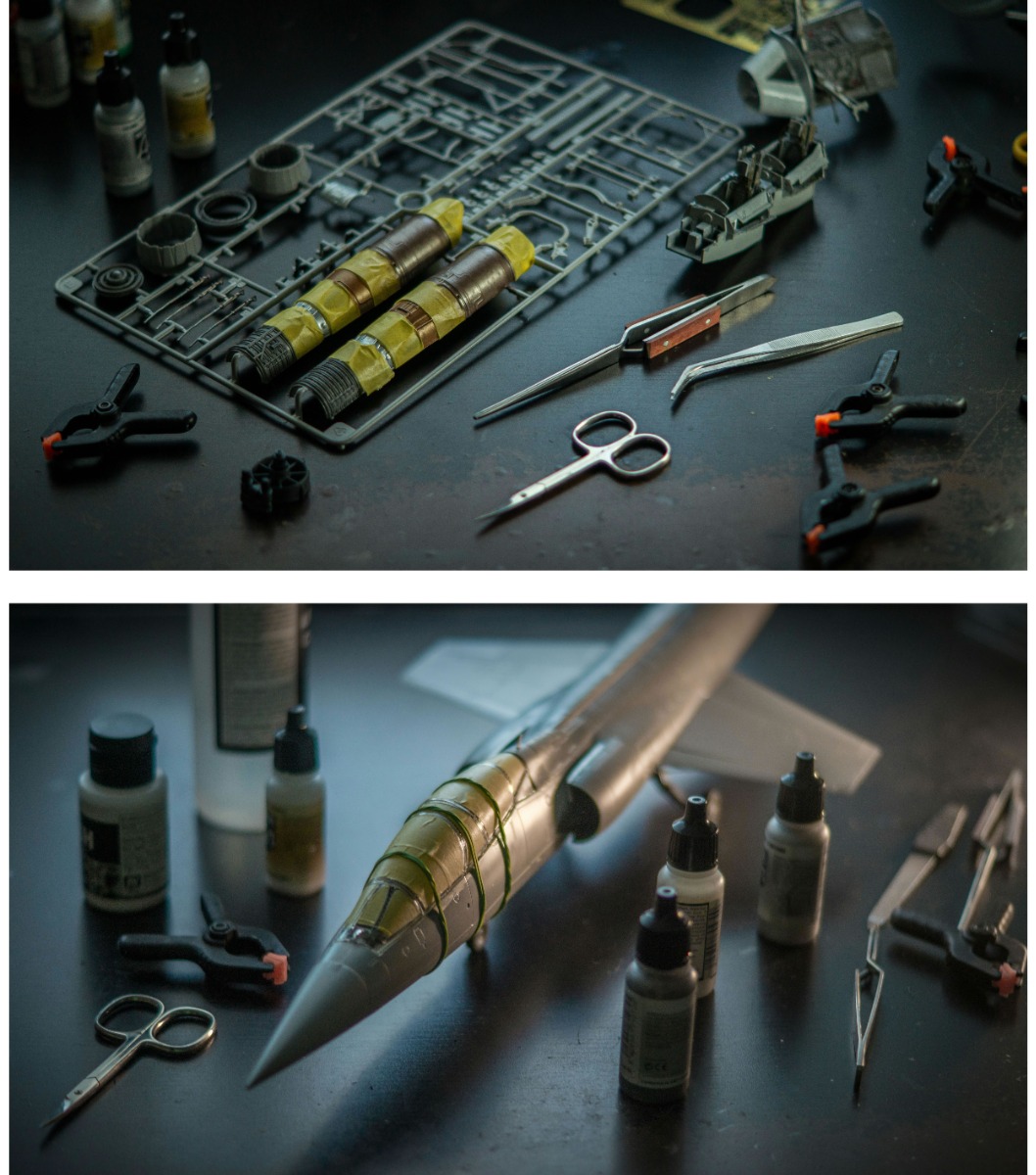
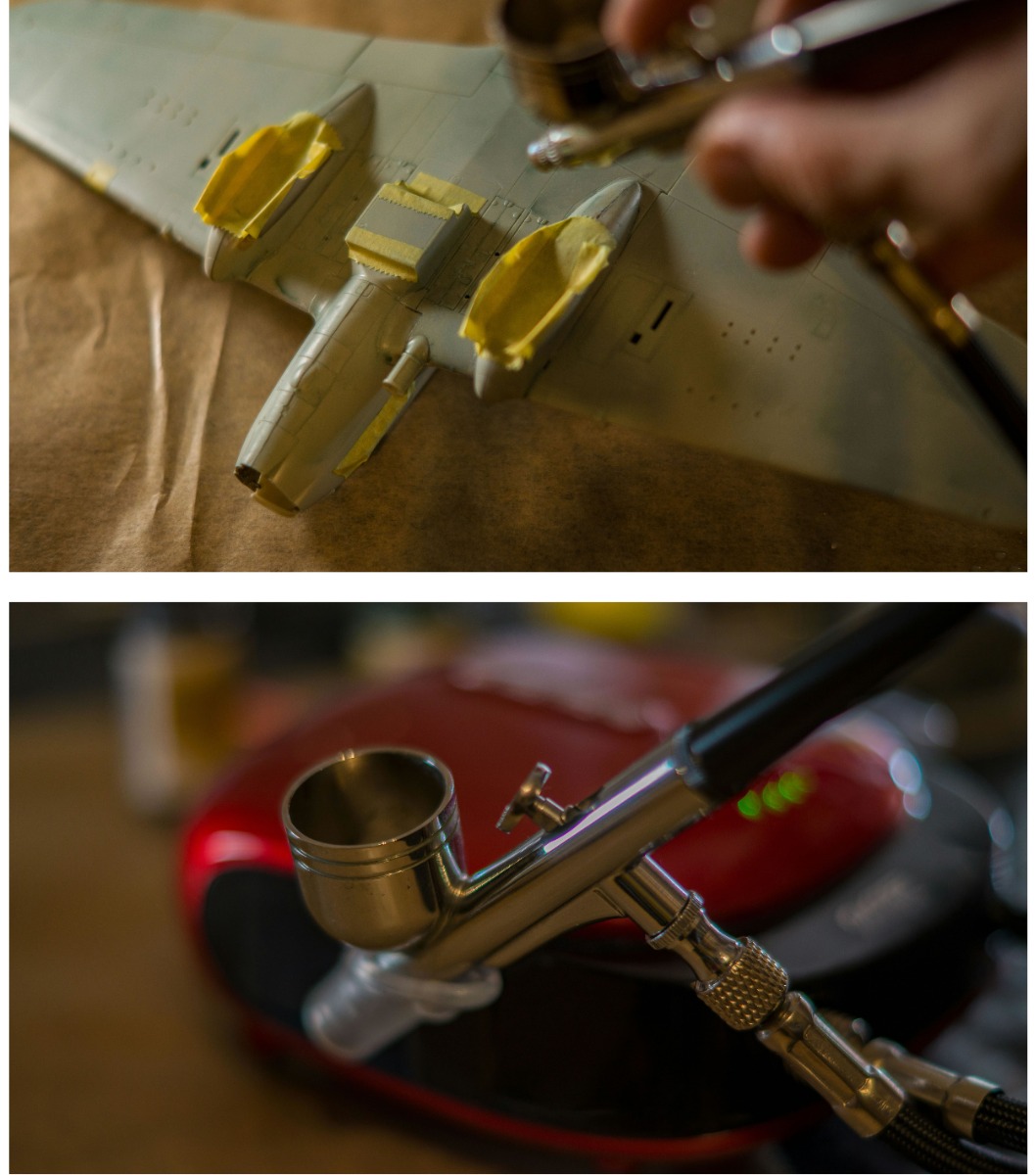
 Spread the cost with Paypal Credit
Spread the cost with Paypal Credit
 Spread the cost with Klarna
Spread the cost with Klarna


